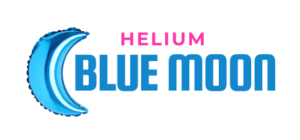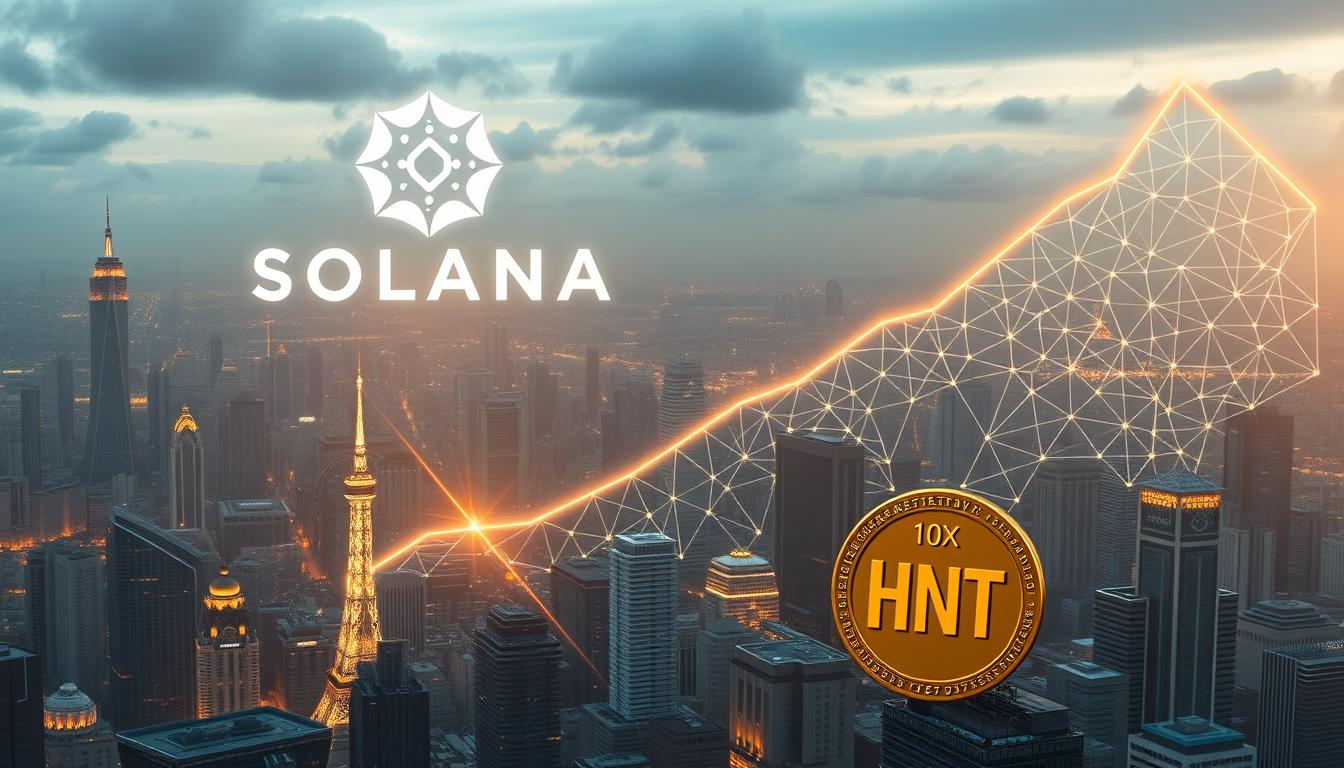Helium’s Bold Betrayal? Why Leaving Ethereum for Solana Might Be the Smartest Move in Crypto
Imagine a world where IoT devices grow by 10X in just two years. That’s exactly what the Helium Network has achieved since its migration to the Solana blockchain. This shift has not only boosted scalability but has also opened up new opportunities for HNT crypto investments. The migration widget and a seamless wallet migration process have been instrumental in this transition. For instance, users only need to deposit 0.00139088 SOL to begin the process, ensuring minimal disruption to their accounts. This shift isn’t just about moving tokens; it’s about maintaining security and ensuring that your private keys remain unchanged.
The Helium Network’s migration to Solana has been a game-changer. It’s not just about moving data; it’s about creating a more secure and scalable environment. The shift has enabled faster transaction times and lower fees, making it more attractive for investors and users alike. The integration of NFT collectibles post-migration has added a new layer of engagement for the community. The migration widget has streamlined the process, ensuring that even those new to blockchain can navigate the transition smoothly.
Key Takeaways
- The Helium Network’s migration to Solana has enabled a 10X growth in IoT applications by 2025.
- The migration has enhanced scalability and security, making HNT crypto investments more attractive.
- The migration widget has simplified the transition process, requiring only a small SOL deposit of 0.00139088.
- Keeping the same private keys and seed phrases ensures security and continuity for users.
- Post-migration, users can collect NFTs, enhancing the overall ecosystem experience.
Background and Significance of Blockchain Migrations
The evolution of blockchain technology has been a cornerstone in the growth of decentralized networks. Helium’s blockchain journey is a prime example of how innovation can drive expansion and scalability. From its early days to its current state, the Helium blockchain has been at the forefront of merging IoT with crypto innovations.
Evolution of Helium’s Blockchain
The Helium Network began with a focus on creating a decentralized network for IoT devices. Over time, the network has evolved to integrate advanced blockchain features. For example, the introduction of token mapping and state management has streamlined operations and improved efficiency. The migration to Solana has been a significant milestone, enhancing scalability and security.
The Role of IoT in Crypto Innovations
The integration of IoT devices with blockchain technology has revolutionized real-time data exchange. By merging IoT capabilities with crypto, the Helium Network has created a seamless ecosystem for data transmission and security. The use of hotspots and the Helium Wallet app have further simplified user interaction with the blockchain, making it more accessible. The shift from early challenges to sophisticated state management reflects the network’s commitment to innovation. The introduction of token mapping has streamlined token distribution, ensuring a more efficient process. The Helium Wallet app has been instrumental in managing user accounts and devices, ensuring a secure and user-friendly experience. The integration of IoT devices with blockchain technology has opened new avenues for innovation. The ability to handle real-time data exchange securely and efficiently has made the Helium Network a leader in the crypto space. The use of blockchain has not only enhanced scalability but has also provided a robust platform for IoT integration. The shift to the Solana blockchain has brought about significant improvements in transaction speed and security. The introduction of NFT collectibles has added a new layer of engagement for users. The seamless migration process has ensured minimal disruption to user accounts and devices. The evolution of the Helium blockchain is a testament to the power of innovation in the crypto space. By merging IoT capabilities with advanced blockchain features, the network has created a robust ecosystem for data transmission and security. The use of token mapping, wallet apps, and hotspots has simplified user interaction, ensuring a seamless experience. As the network continues to evolve, the integration of new technologies will continue to drive growth and scalability in the IoT and crypto space. By understanding the evolution of blockchain technology and its integration with IoT devices, users can better appreciate the significance of the Helium Network’s migration to Solana. This shift not only enhances scalability and security but also opens up new opportunities for innovation and growth in the crypto space. The seamless integration of blockchain and IoT technologies has created a robust ecosystem for data transmission and security, setting a new standard in the industry.
Helium Network migration Solana: Exploring the Transition
The transition of the Helium Network to Solana marks a significant milestone in its evolution, offering enhanced scalability and security. This migration, initiated on April 18, 2023, was meticulously planned to ensure a seamless experience for all users.
Overview of the Migration Process
The process began with a migration window that captured the network’s state using a Merkle Tree snapshot. This snapshot ensured that every account, device, and wallet was accurately recorded, providing a clear starting point for the transition. The migration widget played a crucial role, simplifying the process for users and guiding them through each step effortlessly.
Key Changes and Expected Benefits
The move to Solana introduced several key improvements. Transaction capacity increased significantly, jumping from under 50,000 transactions per second to over 50,000, thanks to Solana’s Proof of History mechanism. This boost in capacity ensures faster confirmation times and lower fees, making transactions more efficient and cost-effective.
| Feature | Before Migration | After Migration |
|---|---|---|
| Transaction Capacity | >50,000 tps | |
| Transaction Fees | Average of $0.35 | Lower fees |
| Wallet Support | CLI wallet | Phantom & Ledger |
| User Growth | ~150k wallets | ~60k active wallets |
Users also benefited from the introduction of NFT collectibles, adding a new layer of engagement within the ecosystem. The migration process was designed to be user-friendly, with minimal disruption, ensuring that users could transition smoothly without losing access to their accounts or devices.
The Helium team’s commitment to innovation and user experience is evident in this transition. By leveraging Solana’s robust infrastructure, the network has positioned itself for future growth and scalability, ensuring it remains at the forefront of IoT and blockchain integration.
Navigating the Helium Wallet Migration Process
Migrating your wallet is a crucial step in accessing advanced features and ensuring smooth operation. This section guides you through both automated and manual methods to ensure a smooth transition.
Wallet Migration Options and Step-by-Step Guidance
Choose between the migration widget and manual methods. The migration widget simplifies the process, while manual methods offer more control. Automated Method: Migration Widget
- Open the Helium Wallet app and log in.
- Open the migration widget.
- Deposit 0.00139088 SOL to seed your wallet.
Manual Method
- Export private keys from the CLI wallet.
- Import them into your preferred wallet app.
Utilizing the Migration Widget and Manual Methods
Using the widget simplifies the process, while manual methods are ideal for experienced users. Using the Migration Widget – The widget guides you through each step, making it easy to transition. Manual Methods – Export private keys from CLI and import them into Phantom, Ledger, or another wallet.
| Feature | Before | After |
|---|---|---|
| Transaction Capacity | >50k tps | |
| Wallet Support | CLI | Phantom, Ledger |
| Fees |
Ensure a smooth transition by following each step carefully to avoid data loss or access issues.
Technical Insights: NFTs, Token Mapping, and Security
Understanding the technical backbone of the migration is crucial for grasping its implications. This section delves into the intricacies of token mapping, security measures, and the role of NFTs in the ecosystem.
Token Mint IDs and Blockchain Architecture
The migration process involves mapping tokens to their new environment. Each token type—HNT, MOBILE, IOT, and DC—receives a unique mint ID on the Solana mainnet, ensuring seamless transitions. This structured approach maintains the integrity of each token’s identity and function within the updated ecosystem.
Managing Private Keys and Security
Security remains paramount. Users must safeguard their private keys, as they grant access to wallets and tokens. Whether using CLI, Ledger, or Phantom wallets, exporting keys securely is essential. Utilizing QR codes or raw key formats can enhance protection, preventing unauthorized access.
Wallet Considerations
Different wallets offer varied experiences. The CLI wallet provides advanced control, while Ledger and Phantom offer user-friendly interfaces. Each has specific update requirements, so staying informed ensures compatibility and security in the new environment.
| Feature | Before Migration | After Migration |
|---|---|---|
| Transaction Speed | Lower capacity | High throughput |
| Wallet Support | Limited options | Phantom, Ledger |
| Token Mapping | Legacy system | Efficient mint IDs |
In conclusion, the migration enhances scalability and security, supported by robust token mapping and wallet solutions. By understanding these elements, users can navigate the new ecosystem confidently, ensuring their assets remain secure and their experience seamless.
Conclusion
The successful migration to the Solana blockchain marks a pivotal moment for the Helium ecosystem, ushering in enhanced scalability and security. This transition has not only streamlined token mapping but also introduced NFT collectibles, enriching user engagement. The process was designed to be user-friendly, with tools like the migration widget ensuring a smooth experience.
Key advancements include faster transactions and improved wallet support, such as Phantom and Ledger. These updates have made the ecosystem more accessible and efficient. Looking ahead, this migration sets the stage for future innovations in IoT and crypto, promising exciting developments.
To stay informed, visit HeliumBlueMoon.com for detailed guides and updates. This migration is just the beginning of a new chapter in decentralized technology. Alright, I need to create an FAQ section based on the provided keywords and structure. The user has provided a detailed structure with specific sections and keywords to include. They want the FAQ to be in HTML format with specific tags and without any markdown. The content needs to be professional yet accessible, targeting tech-savvy professionals and enthusiasts. First, I’ll start by identifying the key areas that the FAQ should cover. The keywords include terms like migration, Solana, blockchain, HNT token, IoT, transactions, wallet app, hotspots, and security. I need to make sure these are addressed without overusing the keywords “Helium” and “Solana.” I’ll need to create questions that address common concerns and provide clear, concise answers. Each question should be in an H3 tag with “Q:” and the answer in a
tag with “A:”. I need to ensure that the content is informative, avoiding any markdown or prohibited actions like keyword stuffing. I also need to ensure the language is American English, and the Flesch Reading Ease score is between 60-70. I’ll keep paragraphs short and ensure the keyword density is within 2%. I should avoid passive voice and section references. I’ll brainstorm potential questions based on the migration process, wallet migration, token conversion, hotspot functionality, security, and the benefits of the migration. I’ll make sure each answer is informative, breaks down complex concepts, and maintains industry credibility without oversimplifying. Now, I’ll structure the HTML accordingly, starting with the H2 tag for FAQ, followed by H3 for each question and p for each answer. I’ll ensure each question is unique and addresses different aspects of the migration process. Finally, I’ll review the content to ensure it aligns with the brand’s voice and mission, ensuring it’s educational and empowering, while maintaining a third-person objective stance with occasional inclusive language. I think I have a clear plan. Now, I’ll proceed to write the FAQ accordingly.

